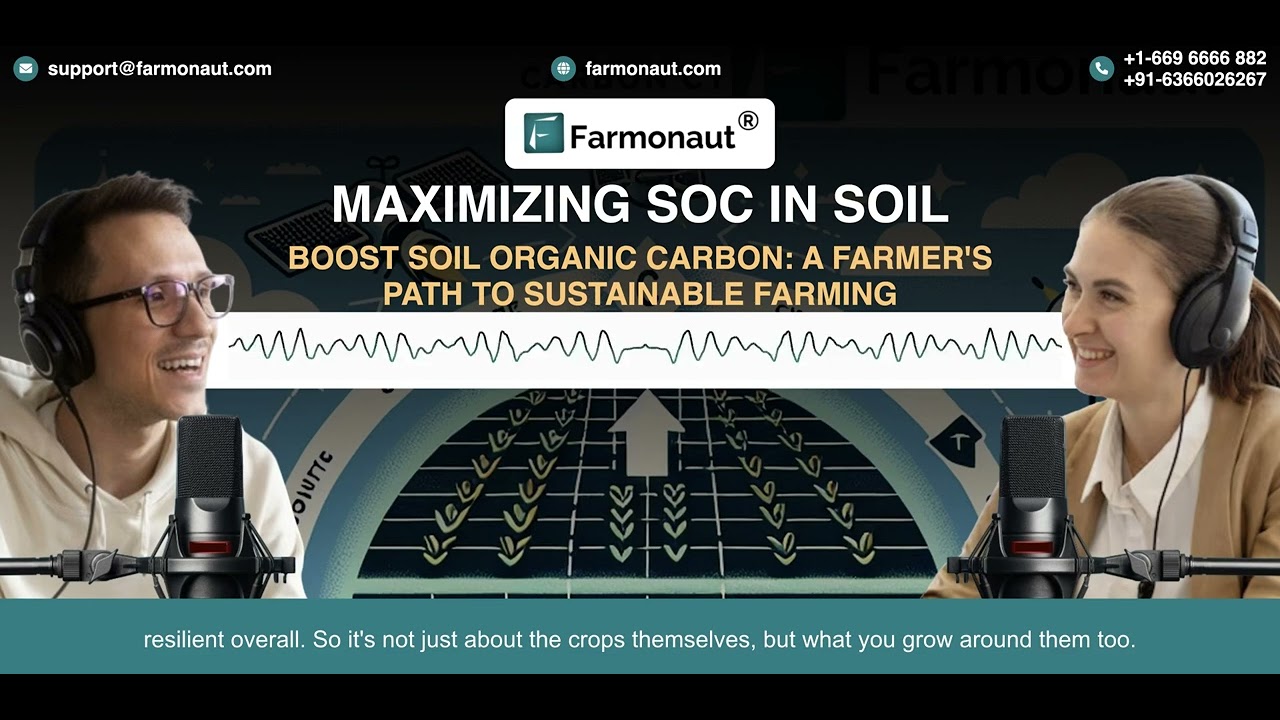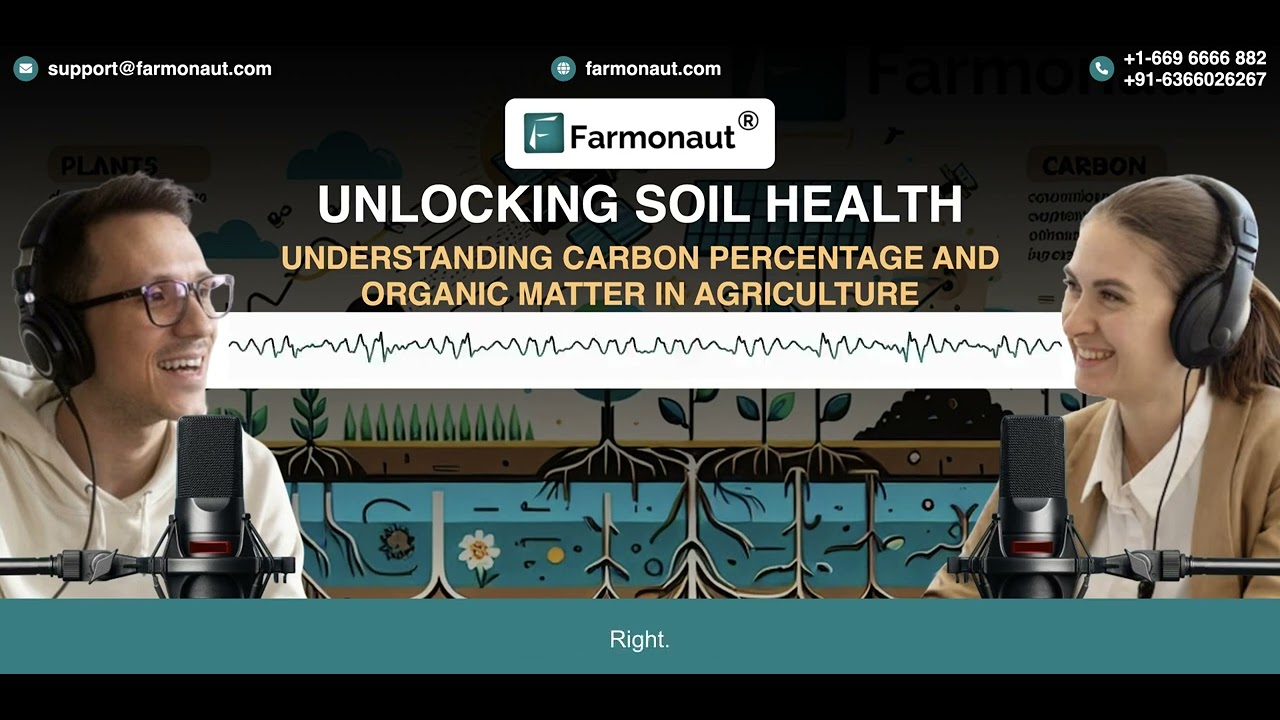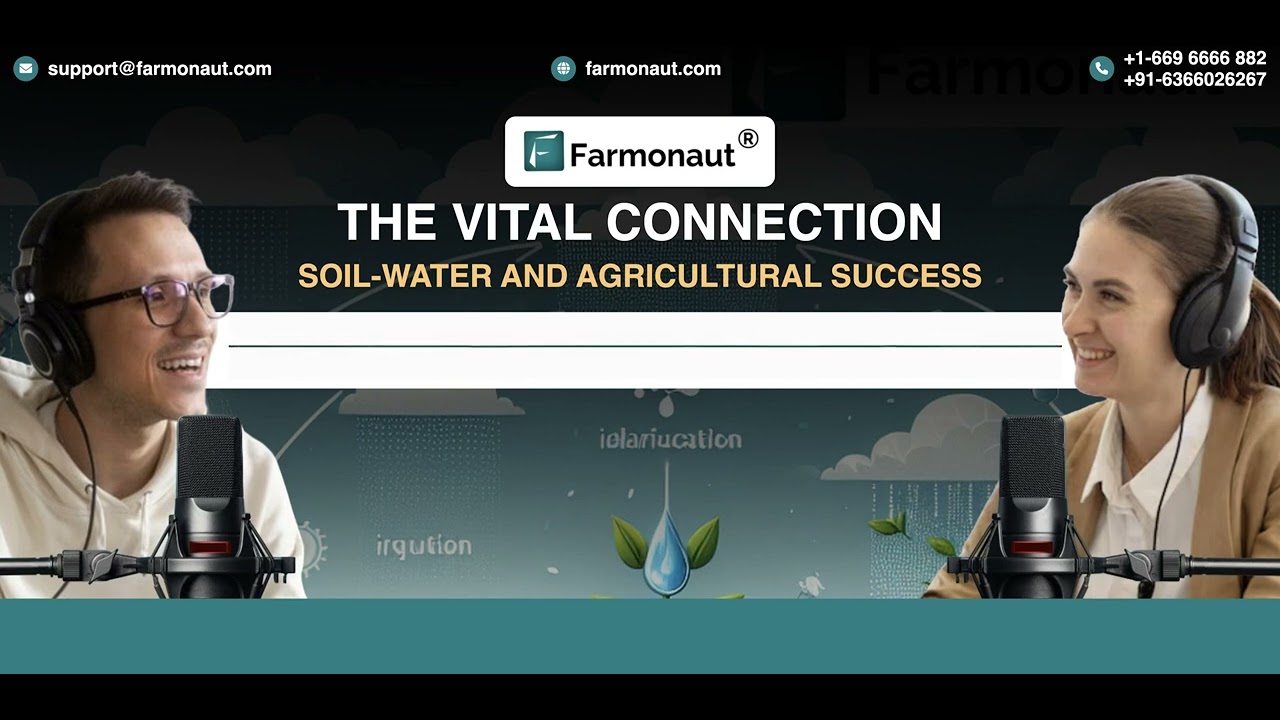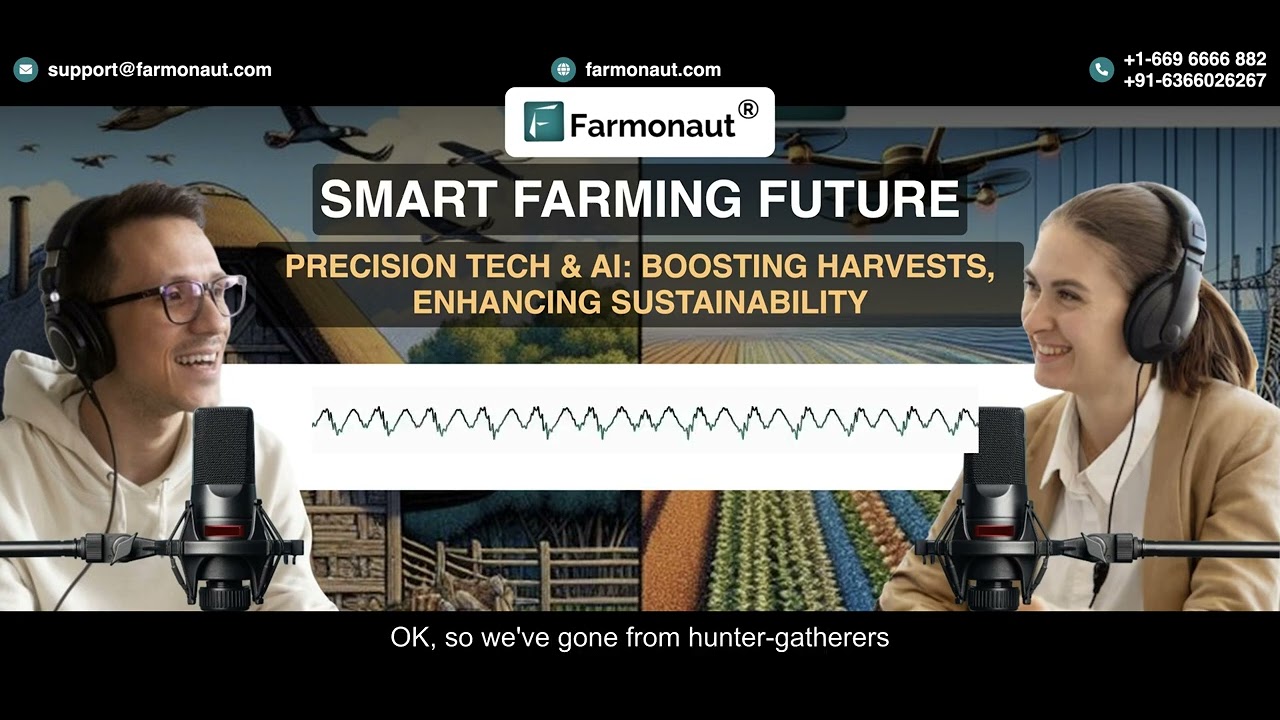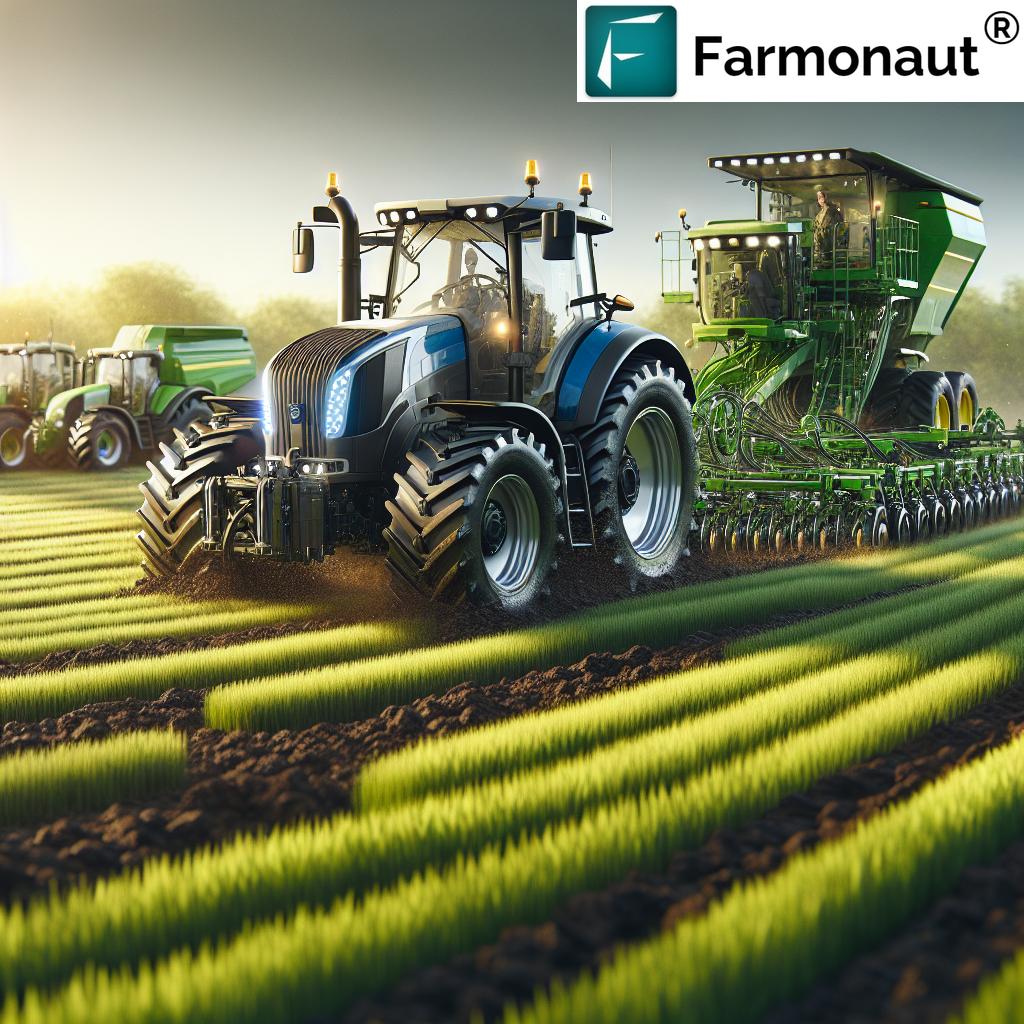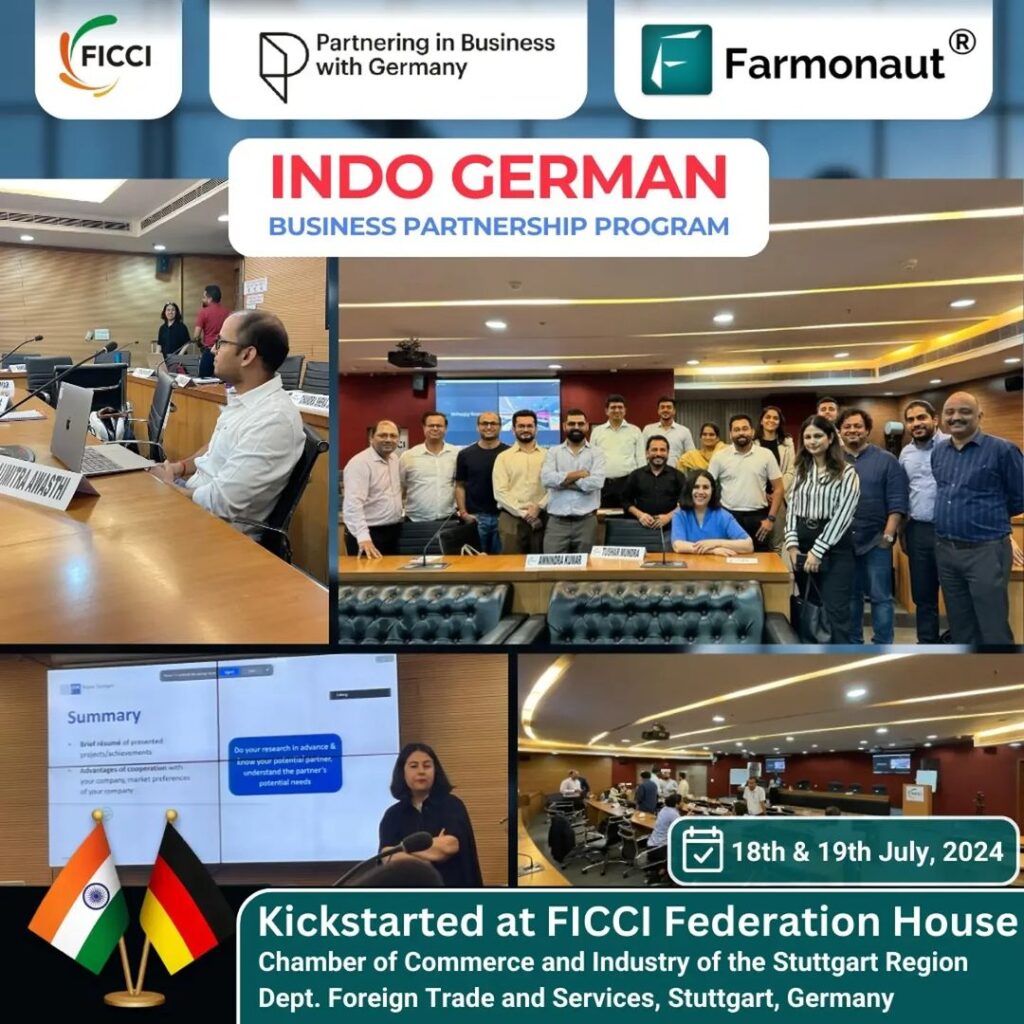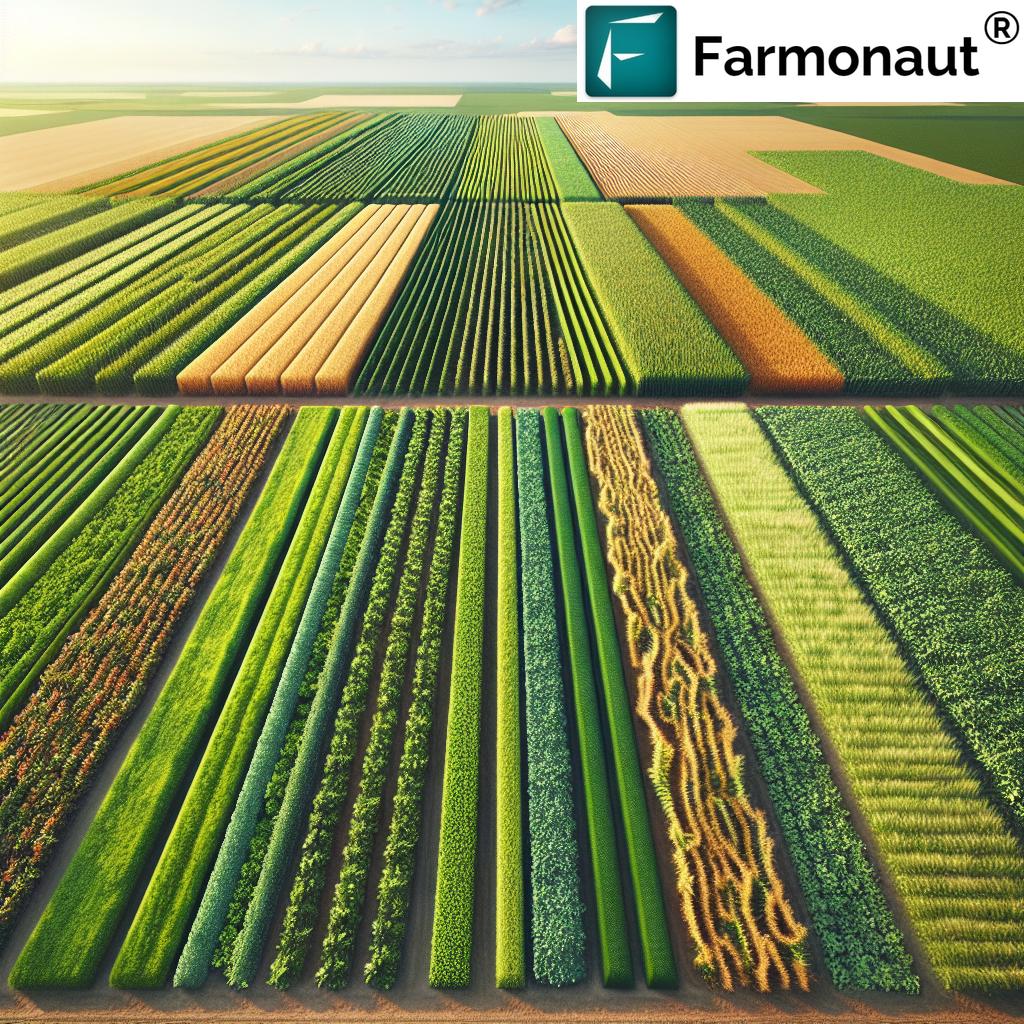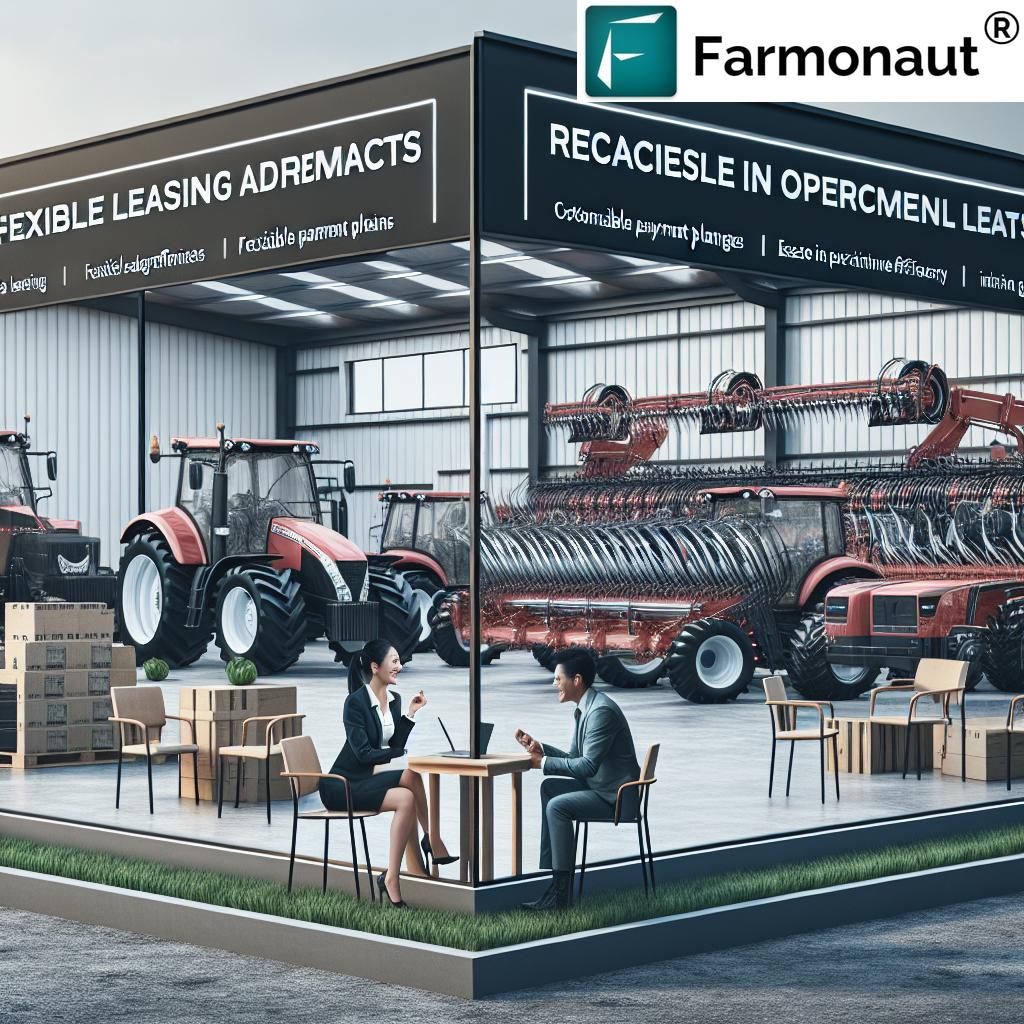No-Till Agriculture: Is No-Till Farming Sustainable?
Table of Contents
- Introduction: No-Till Agriculture and Its Transformative Role
- What is No-Till Farming?
- Comparative Benefits Table: No-Till vs Conventional Tillage
- Key Benefits of No-Till Agriculture
- Soil Health and No-Tillage: Mechanisms and Improving Outcomes
- Water Conservation, Erosion Control & Environmental Impact
- Carbon Sequestration, Organic Matter and Climate Change
- No-Till Farming Examples: Regions Leading the Change
- Challenges of No-Till Agriculture and Practical Management Strategies
- No-Till Innovations and Future Directions for 2025 & Beyond
- How Farmonaut Enables Sustainability in Agriculture
- FAQs on No-Till Agriculture
- Conclusion: The Future of Sustainable Agriculture
“No-till farming can reduce soil erosion by up to 90% compared to conventional tillage methods.”
Introduction: No-Till Agriculture and Its Transformative Role
No-till agriculture, also known as no-tillage farming, has captured global attention as a truly innovative sustainable approach for transforming modern agriculture. In an era dominated by concerns of soil degradation, climate change, erosion, water scarcity, and food security, the agricultural sector is increasingly shifting towards methods that preserve the earth’s natural resources. No-till farming is at the forefront of this movement, offering key solutions for improving soil health, mitigating environmental impacts, and ensuring productivity for years to come—especially as we approach 2025 and beyond.
This comprehensive blog explores what is no-till farming, addresses the pivotal question “is no-till farming sustainable?”, and provides no-till farming examples from regions leading the way. We’ll dissect the sustainability of this practice, examine soil health, water conservation, carbon dynamics, and highlight the ways companies like Farmonaut are empowering farmers with satellite-driven data for resilient agriculture.
What is No-Till Farming?
No-till farming—or no-tillage agriculture—is an agricultural practice that minimizes soil disturbance by eliminating the plowing or turning over of soil before planting. Instead, farmers use specialized equipment—like seed drills and coulters—to plant seeds directly into undisturbed soil, which is left covered with residues (such as stalks and roots) from previous crops.
- This method keeps the soil structure intact, reducing disturbance and compaction in the soil layers, and preserving valuable organic matter.
- Crop residues left on the soil surface act as a protective cover, mitigating the impact of raindrops, reducing moisture loss, shielding against temperature extremes, and preventing weed emergence.
- No-till farming sharply contrasts with conventional tillage, which typically includes extensive operations like plowing, disking, and harrowing—practices that expose the earth to wind and water erosion, accelerate organic matter loss, and disrupt soil microbial life.
The primary focus keyword “no-till agriculture” appears in the first 10% of this content—setting the stage for a highly relevant and SEO-optimized resource on this transformative agricultural practice.
Comparative Benefits Table: No-Till Farming vs Conventional Tillage
Understanding the quantitative advantages of no-till agriculture is crucial for farmers and stakeholders considering a shift toward sustainability in 2025 and beyond. This comparison highlights why no-till farming has emerged as a recognized alternative to traditional tillage.
| Farming Practice | Soil Organic Matter Increase (%) | Erosion Reduction (%) | Water Retention Improvement (%) | Carbon Sequestration Potential (tons/ha/year) | Average Yield Impact (% change) |
|---|---|---|---|---|---|
| No-Till | +13% | Up to 90% | +20% | 0.3 – 0.6 | 0 to +5%* |
| Conventional Tillage | 0% (Baseline or lower) | 0% (Baseline) | Baseline | 0.1 – 0.2 | 0 to -3%* |
*Yield impact may vary based on crop, region, soil, and management. No-till often maintains or improves yields in the long term.
“No-till agriculture increases soil organic carbon by 13% on average, enhancing long-term soil fertility and sustainability.”
Key Benefits of No-Till Agriculture
No-till farming offers numerous sustainability benefits—for soil, water, climate, economics and beyond. Here are the main reasons it’s recognized as a transformative approach in modern agriculture, especially in 2025 and future years:
- Soil Health Improvement: No-till preserves soil structure, aggregates, and pore spaces, helping maintain a thriving ecosystem of microorganisms, earthworms, and soil fauna. The result is increased organic matter, fertility, and enhanced nutrient cycling — all vital for resilient soils.
- Erosion Control: Leaving crop residues on the surface provides a protective buffer against wind and water erosion, reducing the critical issue of topsoil loss that plagues areas prone to drought or heavy rains.
- Water Conservation: Residue cover reduces evaporation, increases infiltration, and allows for better moisture retention in the soil. No-till systems are proven to be more drought resilient—a crucial trait in the face of global climate change.
- Carbon Sequestration: By minimizing soil disturbance, no-till traps more carbon in the soil, sequestering significant amounts of carbon (on average 0.3–0.6 tons/ha/year). This process helps mitigate climate change and lowers greenhouse gas emissions commonly associated with conventional practices.
- Reduced Fuel and Labor Costs: Eliminating multiple tillage passes saves on fuel, reduces labor hours, and lowers equipment wear, leading to improved economics for farmers.
- Enhanced Biodiversity: Stable, undisturbed soils support a greater diversity of rooted plants, beneficial insects, birds, and microbial life.
- Improved Soil Fertility: With higher levels of organic matter, soils under no-till farming consistently display increased fertility—key to sustaining high crop yields year after year.
Soil Health and No-Tillage: Mechanisms and Improving Outcomes
At the heart of no-till agriculture lies a profound impact on soil health. Here’s how this practice improves the most critical resource for any farmer:
Maintaining Soil Structure, Aggregates, and Pore Spaces
Conventional tillage disrupts natural soil layers, destroying aggregates (clumps of soil bound by minerals and organic material), compacting topsoil, and impairing water movement. By eliminating the plowing step, no-till helps the soil retain its natural architecture, preserving the pore spaces necessary for air, water, and root penetration.
Increasing Organic Matter and Beneficial Fauna
Every pass with a plow or disk exposes organic matter to rapid decomposition, thus accelerating its loss. No-till, on the other hand, helps soils accumulate organic matter over time—sometimes increasing by over 13%. This supports a flourishing community of microorganisms, earthworms, fungi, and beneficial insects that are essential for nutrient cycling, pest suppression, and overall soil resilience.
Protecting Against Soil Degradation and Loss
By dramatically reducing soil disturbance, no-tillage farming reduces the risk of soil degradation—including problems like compaction, crusting, and erosion—which are common consequences of repeated tillage operations. This means farmers are better equipped to maintain fertility and crop productivity over the long term.
Enhancing Nutrient Cycling
An undisturbed soil ecosystem helps retain nutrients in place, minimize runoff, and foster beneficial symbiotic relationships between soil microbes, fungi (such as mycorrhizae), and plant roots. This improved nutrient cycling reduces the need for synthetic fertilizers and lessens environmental impact.
Explore Farmonaut’s satellite-driven solutions for monitoring soil health, water retention, crop performance and more—available on web, Android, and iOS.
Water Conservation, Erosion Control & Environmental Impact
Water Conservation and Drought Resilience
No-till agriculture is fundamentally about resilient water management. Surface residues slow evaporation and increase water infiltration, allowing crops to tap into soil moisture during dry spells. In 2025, regions with increasingly erratic rainfall will depend on these systems to reduce the impact of drought.
- Soil under no-till can absorb and retain up to 20% more water than conventionally tilled fields.
- This makes cropping systems more sustainable under climate variability and reduces the need for costly irrigation.
- Water quality in downstream rivers and aquifers is improved by reduced runoff and erosion.
Erosion Control: A Critical Environmental Benefit
Among agricultural practices, no-till is unmatched for erosion control. The protective cover from plant residues reduces wind and water erosion by up to 90%, helping maintain topsoil integrity, improve water quality, and prevent nutrient loss.
- This is a critical issue in countries like the United States, Brazil, and Australia, where large-scale farming on erosion-prone soils once led to massive land degradation.
- No-till reduces sediment load in rivers, lessening the harmful effects on aquatic ecosystems.
The environmental impact of conventional tillage—such as increased runoff, water pollution, and even flooding—can be effectively managed by adopting no-tillage farming at scale.
Carbon Sequestration, Organic Matter and Climate Change
A defining advantage of no-till farming is its role as a climate-smart agriculture solution:
- No-till systems help sequester atmospheric carbon dioxide (CO₂) in the soil, storing it in organic matter. This process both enhances soil health and mitigates global warming.
- By reducing the number of passes with machinery, fuel consumption and related carbon emissions drop considerably in no-till agriculture.
- Farmers adopting no-tillage can sequester an additional 0.2–0.5 tons of carbon per hectare per year compared to conventional practices.
- This results in lower greenhouse gas emissions, reduced environmental impact, and healthier, more productive soils for the next generation.
Farmonaut’s environmental impact monitoring tools help users analyze carbon sequestration, optimize resource use, and comply with 2025’s sustainability goals.
No-Till Farming Examples: Regions Leading the Change
No-till agriculture has been widely embraced in several geographic regions, where pioneering farmers have demonstrated its sustainability and productivity. Consider these global leaders:
- United States (Corn Belt): No-tillage farming is practiced on millions of acres across states like Iowa, Illinois, and Indiana—primarily for corn, soybeans, and wheat. By leaving crop residues on the surface and using specialized planters, American farmers experience sustained yields, improved moisture management, and dramatic reductions in fuel/labor costs.
- Brazil: In the Cerrado region and southern states, large-scale soybean production relies almost exclusively on no-till methods to control erosion in sensitive tropical soils—ensuring food production while protecting biodiversity.
- Australia: No-till systems have enabled wheat, barley, and canola farmers in semi-arid areas to maintain soil organic matter, boost fertility, and become more resilient to Australia’s extreme climate variability.
These no-till farming examples from regions worldwide prove the scalability and adaptability of the practice, offering a roadmap for 2025 and beyond.
Challenges of No-Till Agriculture and Practical Management Strategies
Despite the significant benefits, no-till farming faces several challenges—especially for farmers transitioning from traditional methods:
- Initial investment in specialized equipment: Seed drills, coulters, and residue-friendly planters can require upfront costs, though these are often recouped through lower fuel and labor expenses over time.
- Weed management: Without tillage, weed seeds are less likely to be buried, so integrated pest management—including careful herbicide use, cover cropping, rotation, and precision application—becomes important.
- Pest and disease cycles: Surface residues can allow some pests/diseases to overwinter. Crop rotation and timely monitoring are key.
- Slow soil warming in cool climates: Mulch cover can slow early spring warming, which may delay planting in some regions.
To overcome these challenges, modern solutions include:
- Adoption of new technologies and data-driven management platforms such as those offered by Farmonaut, to provide real-time monitoring, moisture status, pest alerts, and optimized input application.
- Use of cover crops for additional pest and nutrient management, as well as to maintain soil health and reduce weed pressure.
No-Till Innovations and Future Directions for 2025 & Beyond
Looking to 2025 and beyond, no-till agriculture is rapidly evolving with the support of innovative technologies and new scientific understanding:
- Precision Agriculture: GPS-guided tractors, variable-rate seeding/fertilizer systems, and satellite data from companies like Farmonaut ensure inputs are precisely applied—reducing waste, improving yields, and enhancing sustainability.
- Biological Soil Amendments: Use of beneficial bio-inoculants, organic composts, and green manure crops helps further increase soil organic matter and resilience to pests/disease.
- Integrated Pest & Crop Management: Real-time satellite and AI-based advisory systems provide early warnings for pest outbreaks and enable timely, targeted intervention.
- Climate-Smart Farm Management: Decision-support tools help farmers respond to erratic weather, drought, and global climate shifts, ensuring food security and reducing risk.
For banks and insurance—Farmonaut’s crop loan and insurance verification tools use satellite-based data to provide crucial risk mitigation for financial decisions in sustainable agriculture.
Learn more about integrating satellite data into your systems via the Farmonaut API and API Developer Docs.
How Farmonaut Enables Sustainability in Agriculture
At Farmonaut, we make satellite-based agricultural insights accessible and affordable to farmers, agribusinesses, and government agencies worldwide. Our technologies empower a rapid transition to no-till agriculture for soil health, erosion control, carbon reduction, and resource efficiency—all essential for global sustainability in 2025:
- Real-time Monitoring: Using multispectral satellite imagery, we support the detection of vegetation health, soil moisture, surface residue coverage, and yield forecasts—giving farmers the actionable data they need to optimize no-till practices.
- Jeevn AI Advisory: Our AI-based platform delivers sophisticated crop management insights, weather alerts, and pest forecasts, increasing productivity while reducing environmental footprint.
- Blockchain Traceability: We help agricultural stakeholders trace their supply chain, ensuring the authenticity and sustainability of their no-till and regenerative operations.
- Environmental Impact Tracking: We provide tools for analyzing carbon sequestration, emissions, and compliance with climate-oriented agricultural policies.
Our modular product suite meets the needs of individual smallholder farmers and the largest multinational enterprises alike, fostering transparency, efficiency, and long-term sustainability in modern agriculture.
FAQs on No-Till Agriculture
- Q: What is no-till farming?
A: No-till farming is an agricultural practice that involves planting crops directly into undisturbed soil covered with residues from previous crops. This method eliminates plowing, preserving soil health, moisture, and biodiversity. - Q: Is no-till farming sustainable?
A: Yes, no-till farming is highly sustainable, improving soil health, reducing erosion, conserving water, sequestering carbon, lowering fuel/labor costs, and supporting ecological biodiversity—making it crucial for climate-smart agriculture in 2025 and beyond. - Q: Does no-till farming impact yield?
A: Most research finds that, when well managed, no-till crops deliver equivalent or improved yields—especially over time due to rising soil fertility and moisture retention. In certain situations, yield may decrease in early transition years but typically recovers as the system stabilizes. - Q: What are common challenges with no-tillage farming?
A: Key challenges include weed and pest management, initial equipment investment, and learning to manage surface residues. Integrated solutions—like cover cropping, advanced monitoring, and precision input application—resolve these concerns. - Q: How does no-till agriculture help with climate change?
A: By reducing soil disturbance, no-till farming increases soil organic carbon, lowers greenhouse gas emissions, and helps sequester carbon dioxide, making it an essential tool for climate-smart faming strategies worldwide.
Conclusion: The Future of Sustainable Agriculture
No-till agriculture is transforming modern farming systems by championing strategies that protect the environment while supporting productive, profitable, and climate-resilient farms. By minimizing soil disturbance, maintaining surface cover, and building organic matter, no-till farming answers today’s crucial question: Is no-till farming sustainable? Every indicator—from improved soil health and erosion reduction to economic savings and carbon mitigation—resoundingly affirms it.
As sustainability imperatives intensify in 2025 and beyond, and as agriculture faces the growing challenges of climate change, no-tillage farming stands out as a solution for farmers, businesses, and society. By combining traditional wisdom with innovative technology—like Farmonaut’s satellite, AI, and blockchain solutions—farmers everywhere can realize the promise of resilient, productive, and truly sustainable agriculture for generations to come.
Ready to Transform Your Farm With No-Till Agriculture?
Access real-time monitoring, AI-based advisory, carbon tracking, and more—powered by Farmonaut. Explore Farmonaut Satellite App products today!




